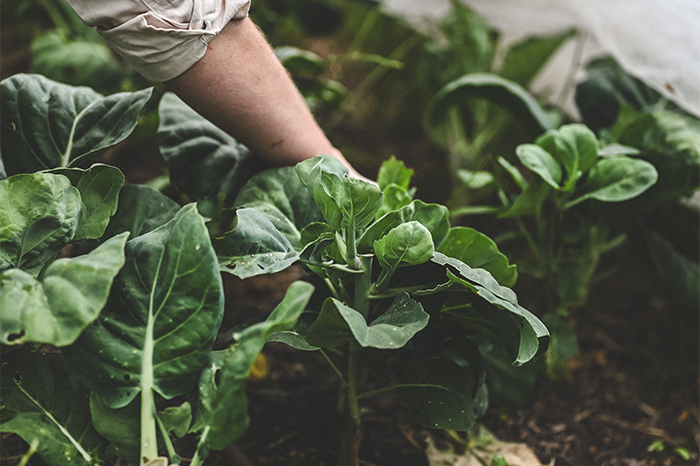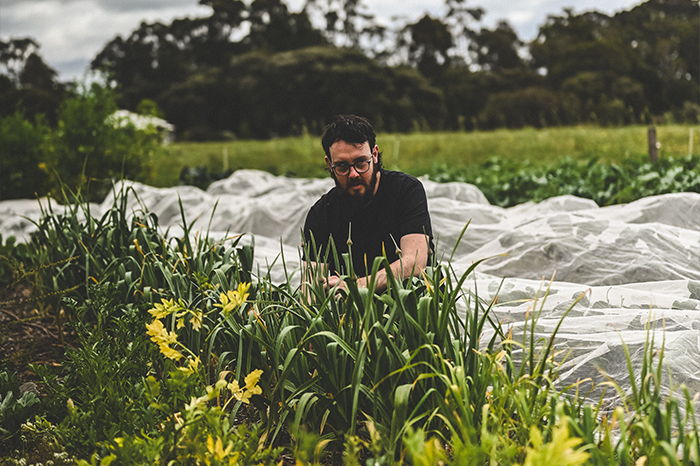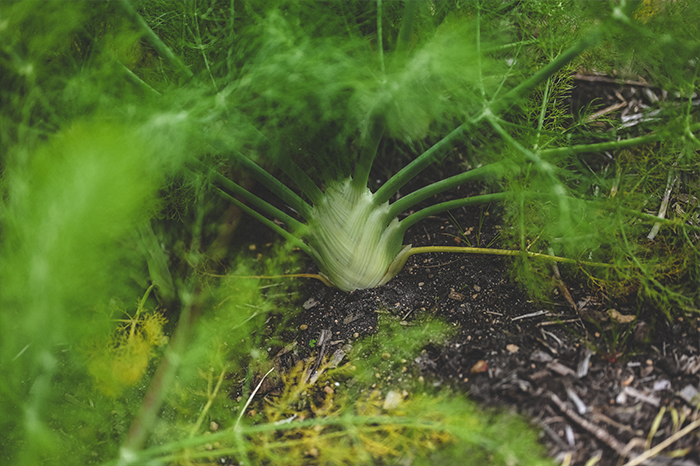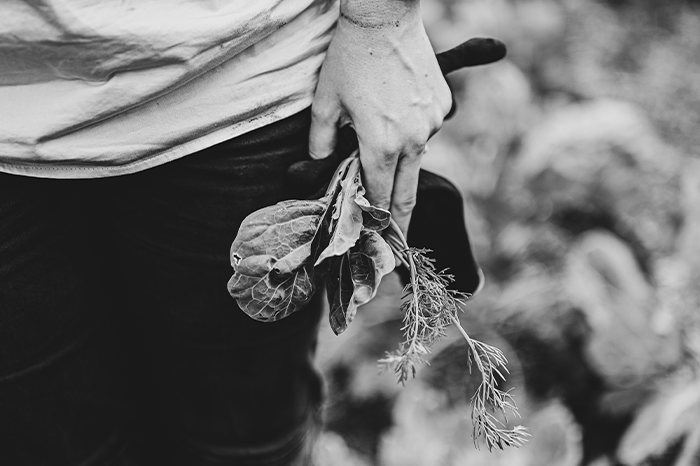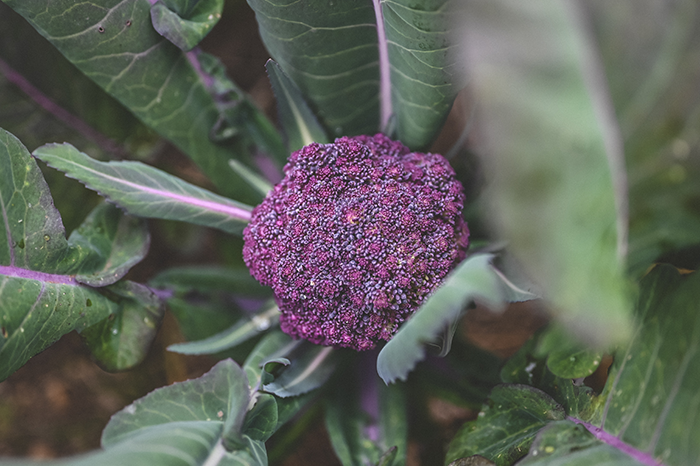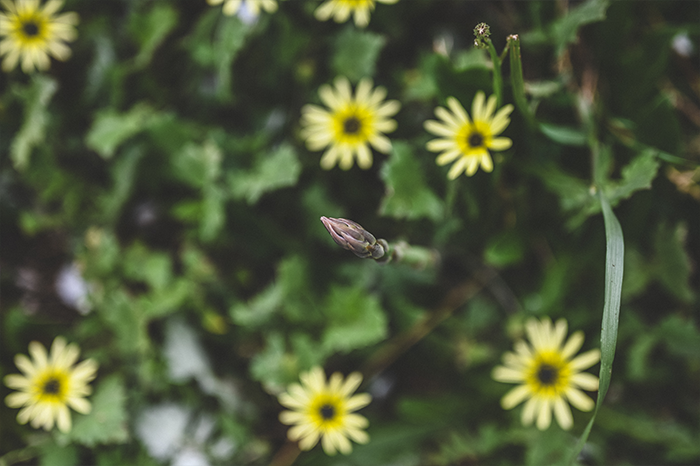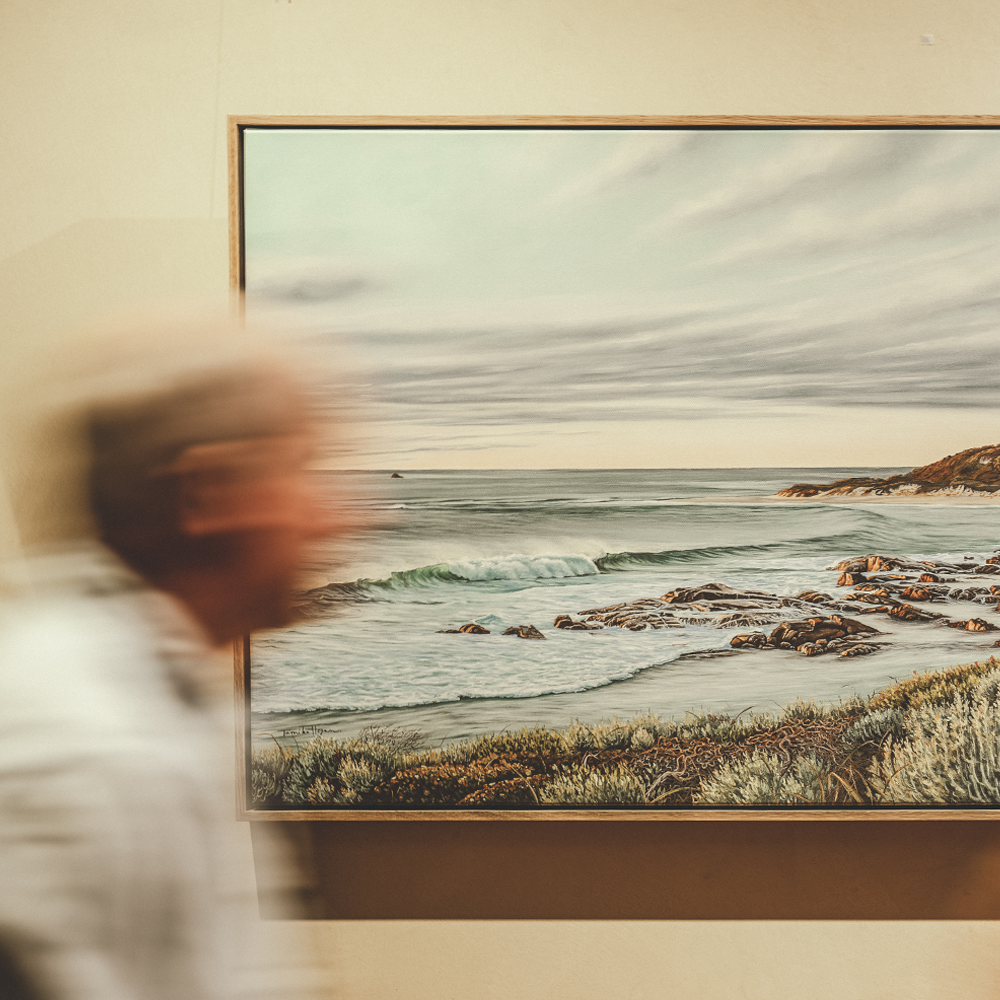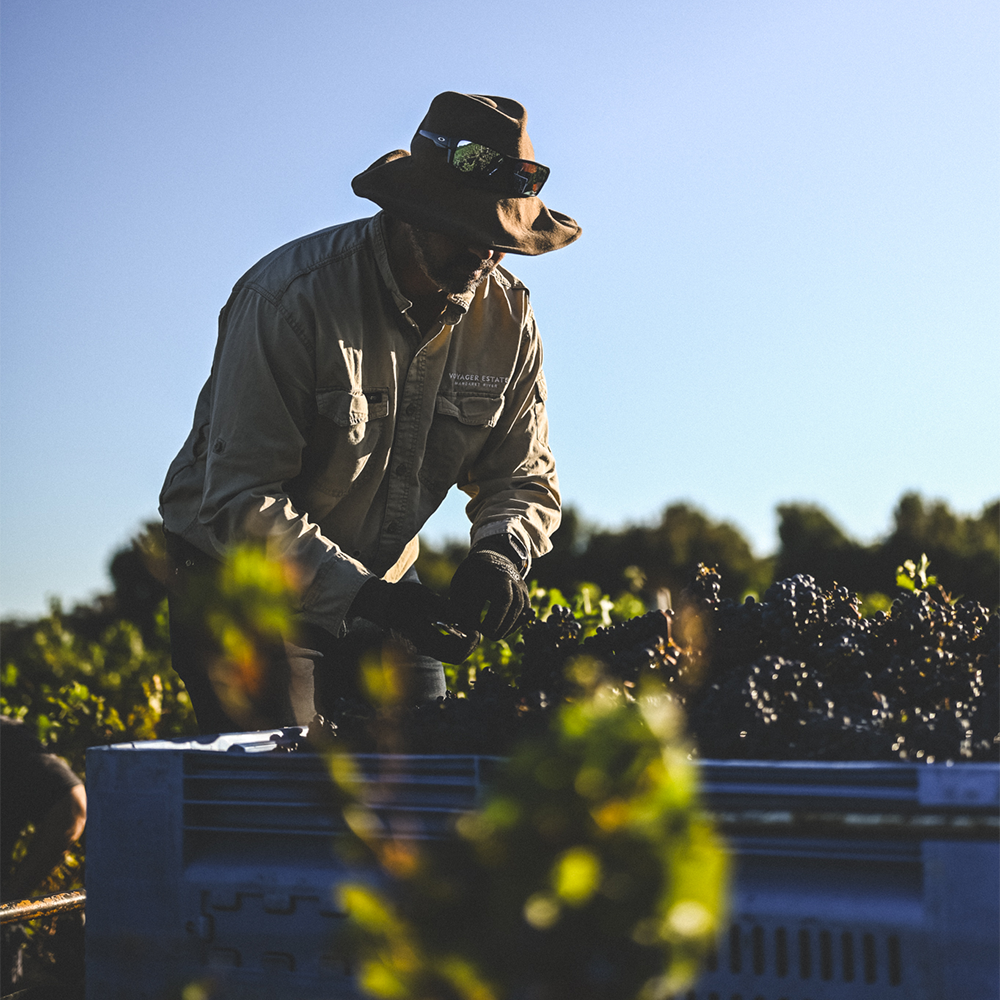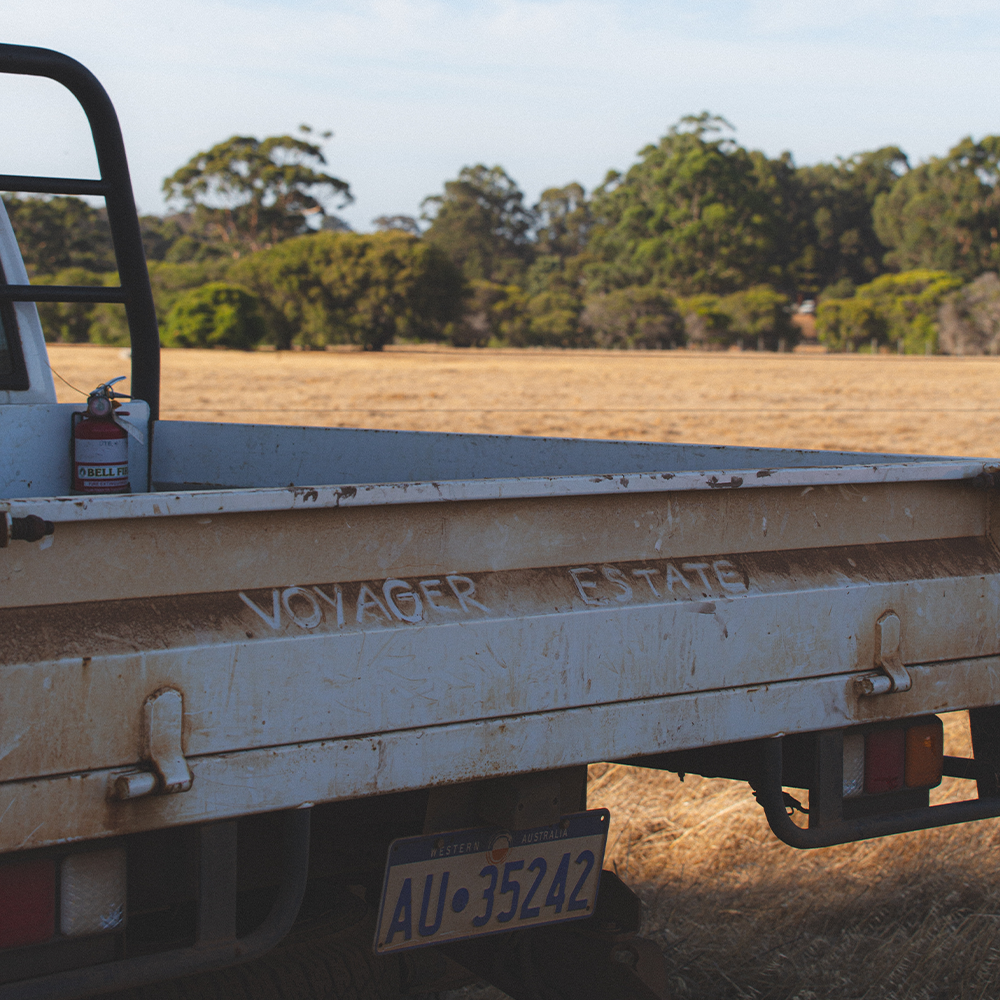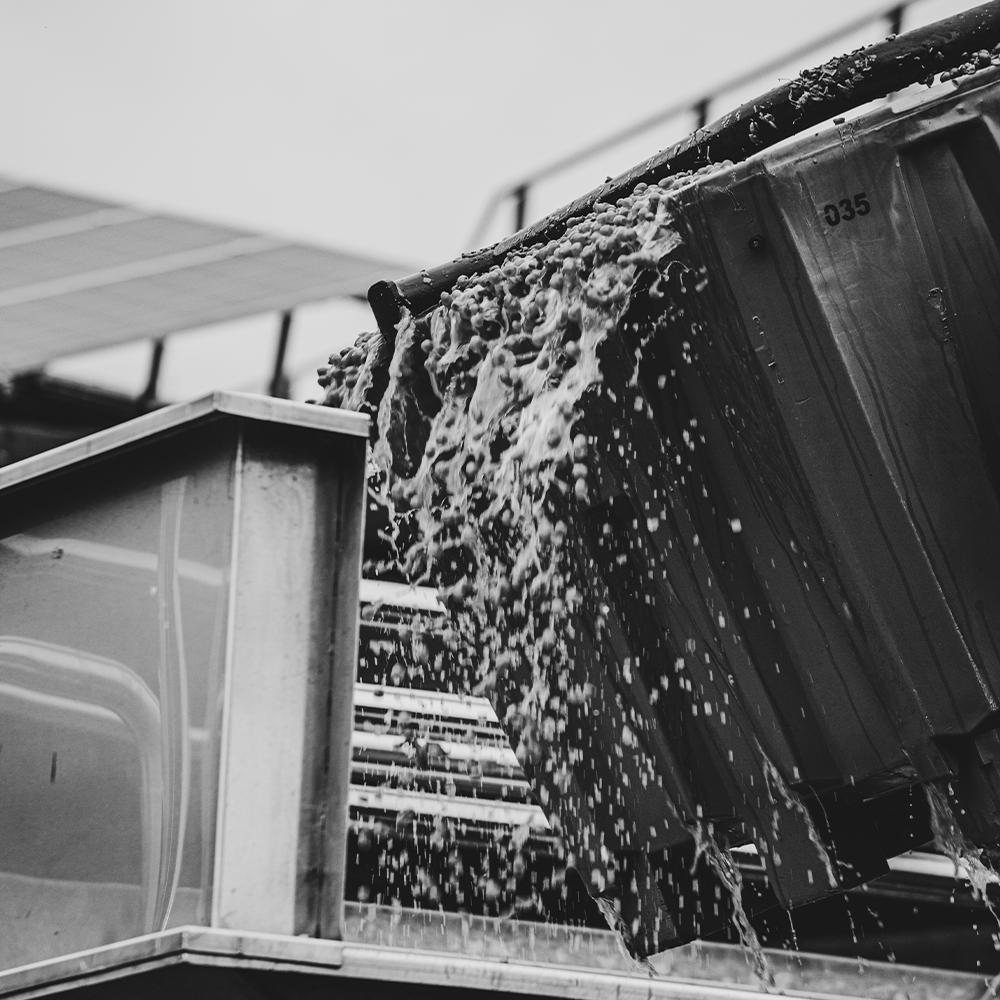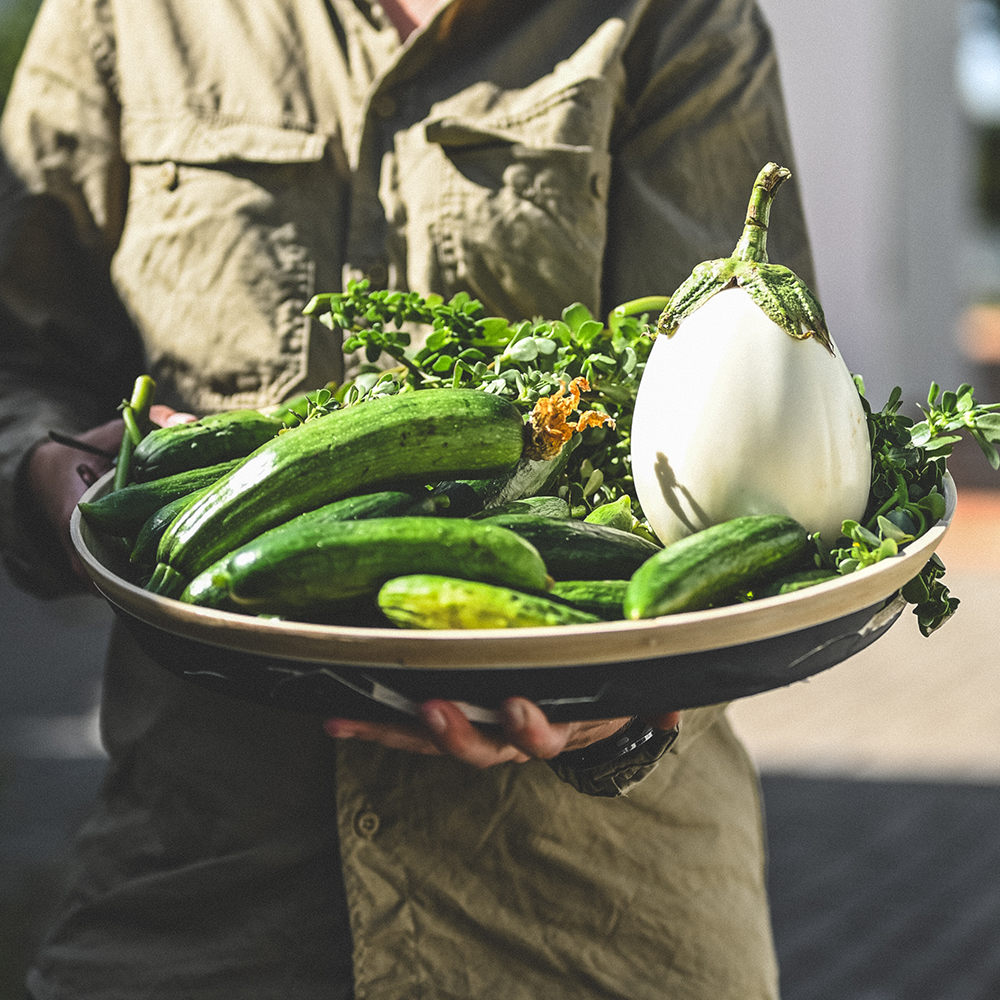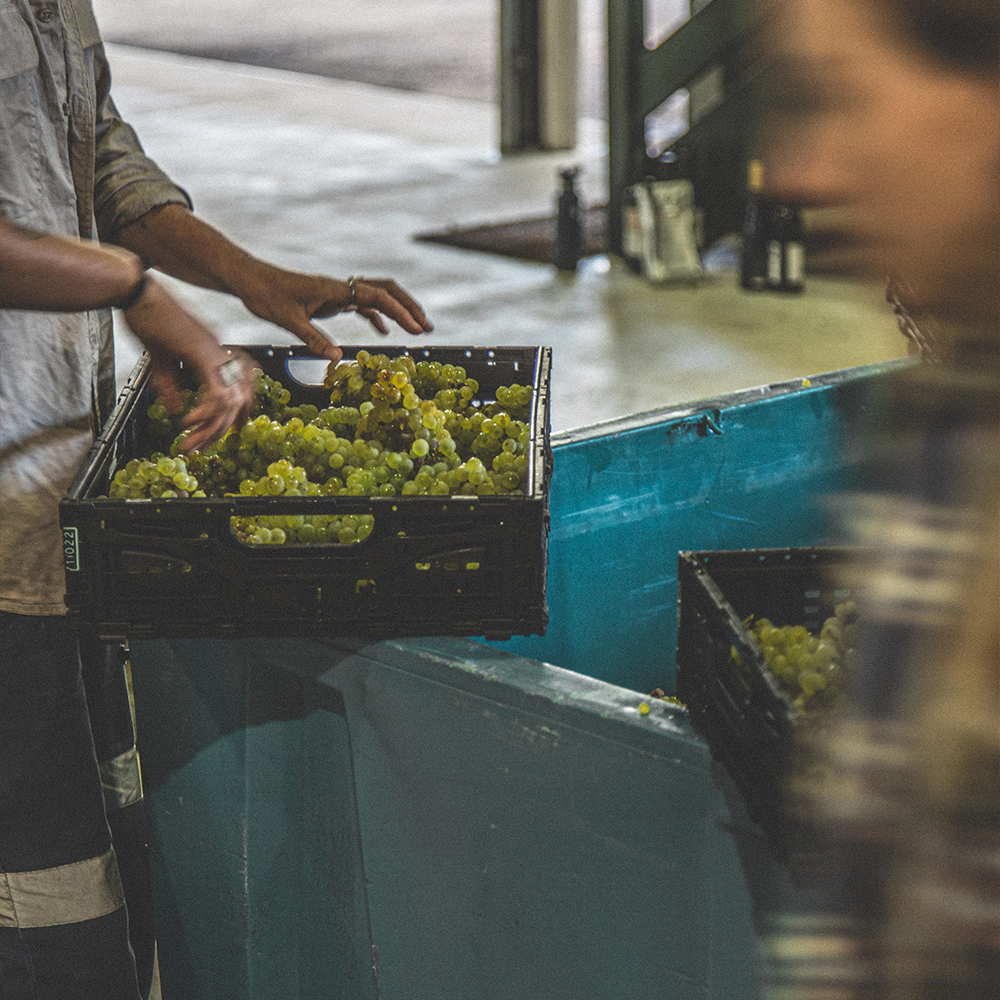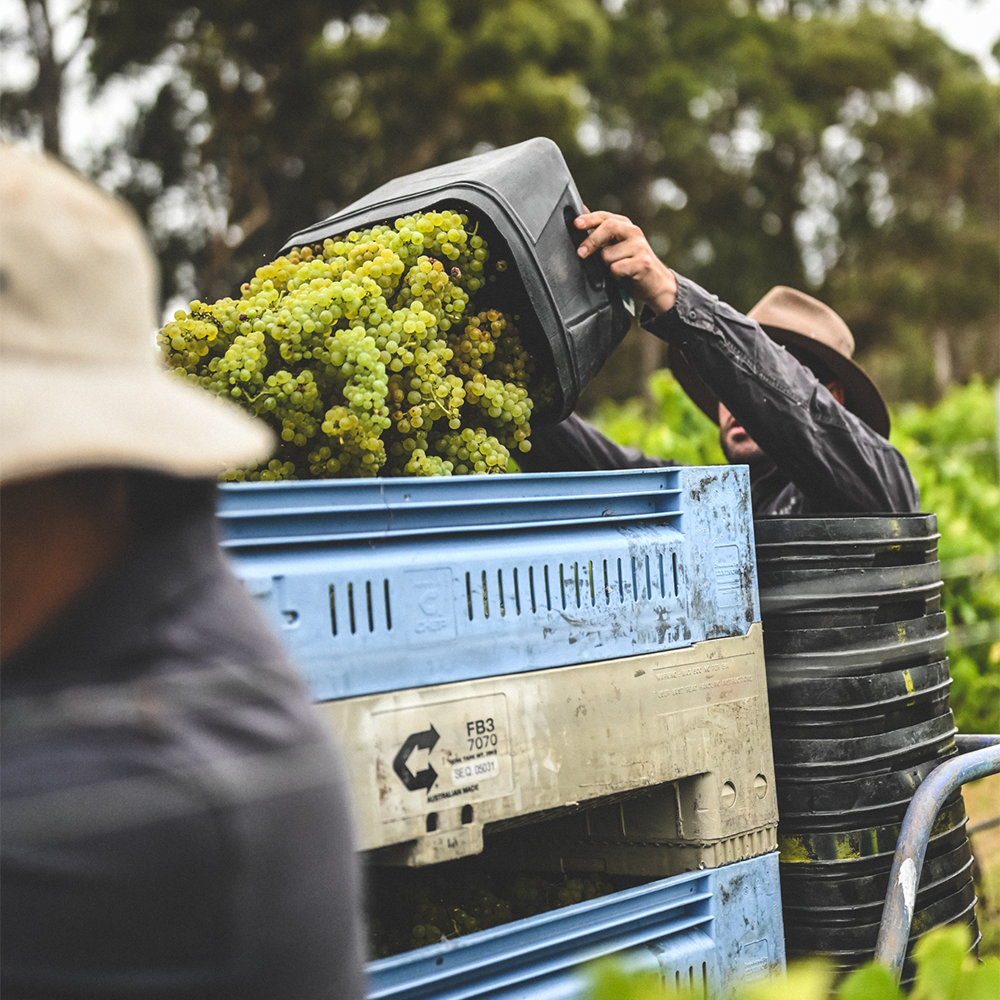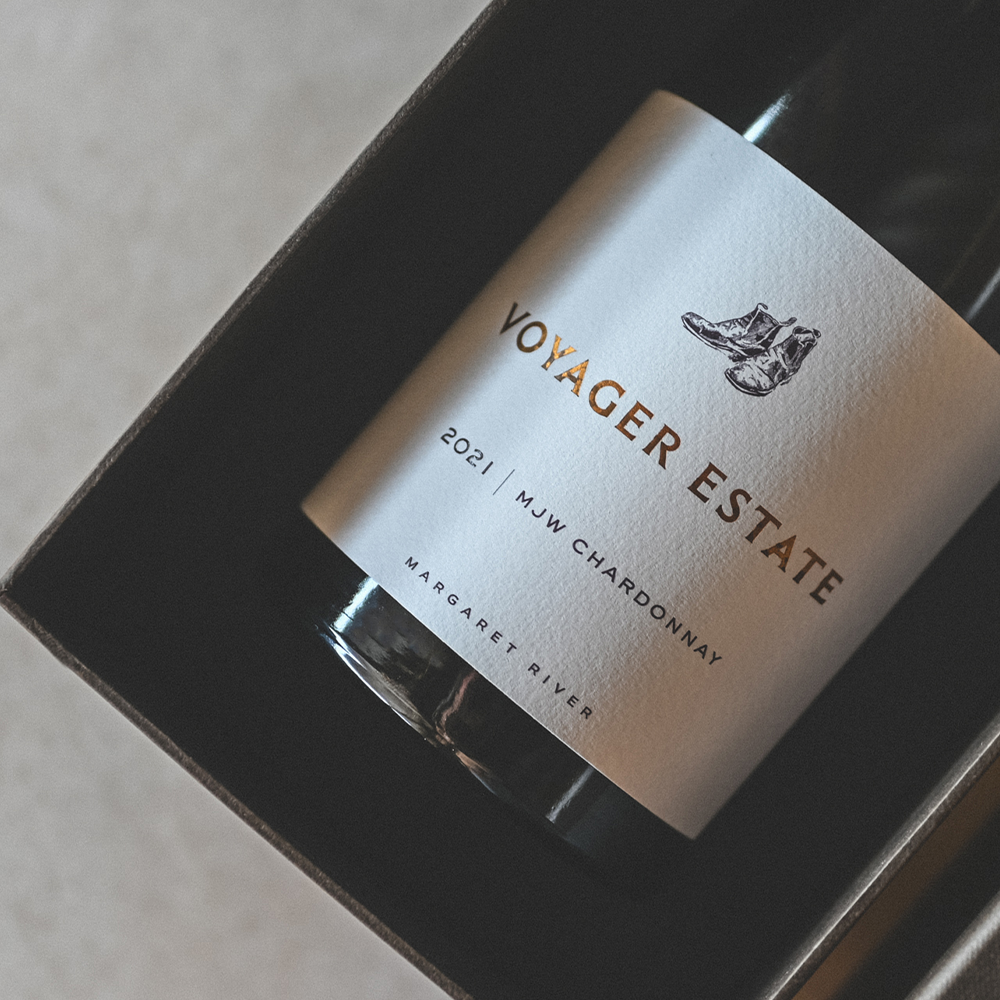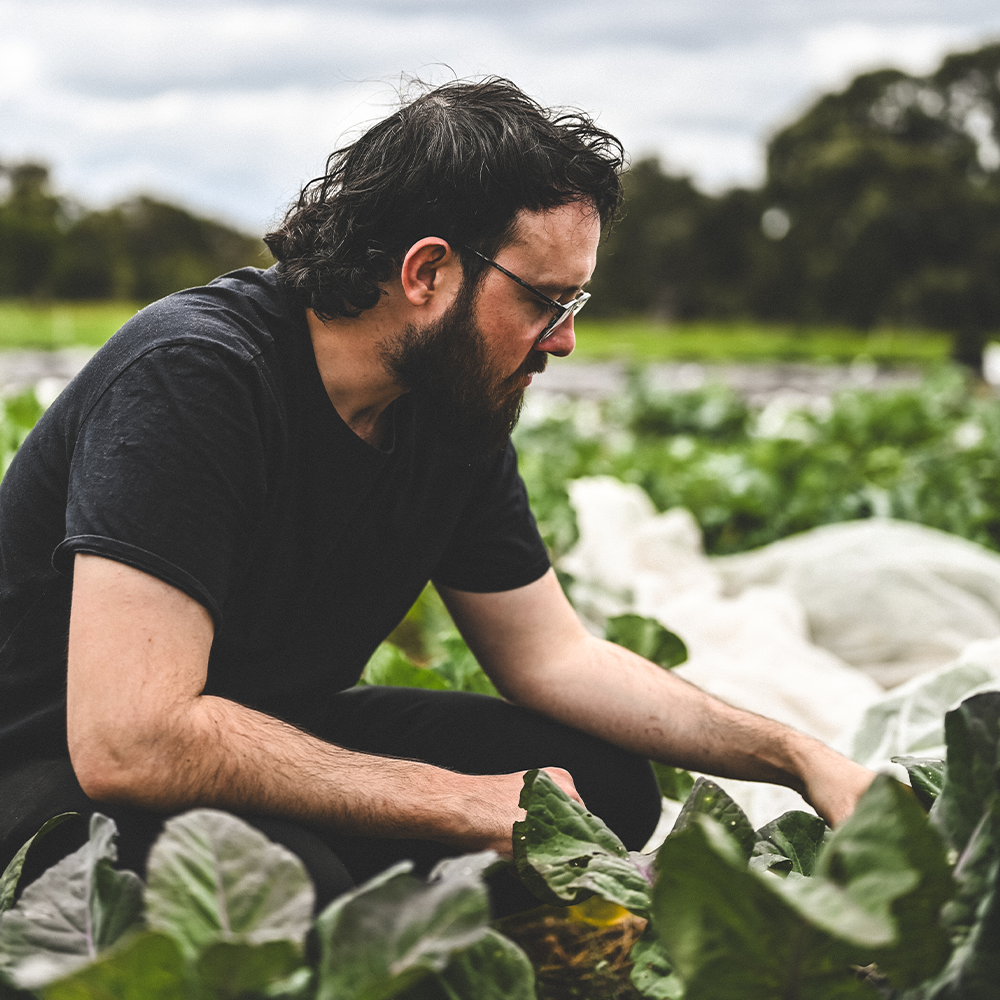Blog
COLOURS OF KAMBARANG
As part of our feature artist program, the Estate welcomed guests to the sold out launch of Margaret River painter Tamika Hogan’s solo exhibition, 'Colours of Kambarang', this past weekend.
Over 55 visitors hailing from various corners of Western Australia and beyond gathered in the Cellar Door for an evening filled with delicious wine and food, soulful melodies, vivid artwork, and creative musings from our guest of honour.
At the heart of 'Colours of Kambarang' is a collection of ten original oil paintings, each a reflection of wildflower season—a time of renewal and abundance along the Western Australian coastline. Tamika's bold strokes and vivid palette evoke the dynamism inherent in Kambarang, infusing her work with a sense of rejuvenation and hope. Emerging from a period of personal struggle, Tamika's art mirrors her own rebirth, a testament to resilience and the embrace of new beginnings.
As guests journeyed through the exhibition, savouring each painting with a glass of wine in hand, they were treated to an array of delicious bites from the Voyager kitchen, including a chickpea and avocado tart, a blini with sardine, pickles and labneh and a mini brioche roll with smoked lamb and capsicum.
Accompanying the food was the enchanting jazz vocals and keyboard prowess of singer-songwriter, Jinna Yang, whose music matched the energy and enthusiasm of the room. Tamika herself also offered intimate insights into her creative process, sharing the challenges and triumphs of balancing motherhood with her career as an artist.
Reflecting on her journey, Tamika spoke of the unwavering support of her family and friends—a community that has been instrumental in realising her dreams. Tears mingled with applause as her words resonated with all present, affirming the power of passion and perseverance.
Tamika said the evening was a great success, commenting "I heard someone say recently that the artist never sees their work for the first time. And I really felt that. We’re too close to our emerging art to ever feel its impact. But on these special occasions, we get a little glimpse into that experience through the lens of others. We get to see how our art impacts our audience."
Adam Elton, Cellar Door Manager, agreed saying that it was fantastic to meet so many visitors and locals in support of local and emerging Margaret River artists. “Tamika is a perfect reflection of the many wonderful creatives in the region that have committed themselves to their passion; to make a living doing what they love and that we get to enjoy! Walking down our hallway is like walking down the beach for a surf in the morning. Tamika’s work is so vivid and true to the beauty of our coastline and all that we love about it.”
Tamika’s collection will remain on display in the Cellar Door daily from 10am – 5pm, Monday to Sunday. We invite visitors to drop in and experience the exhibition until 12th May.
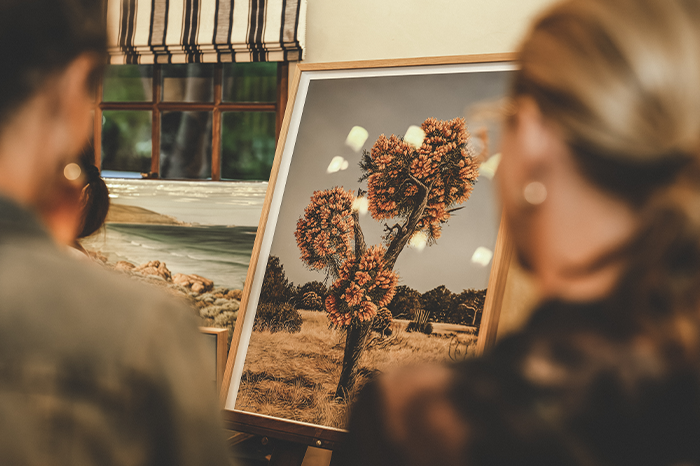
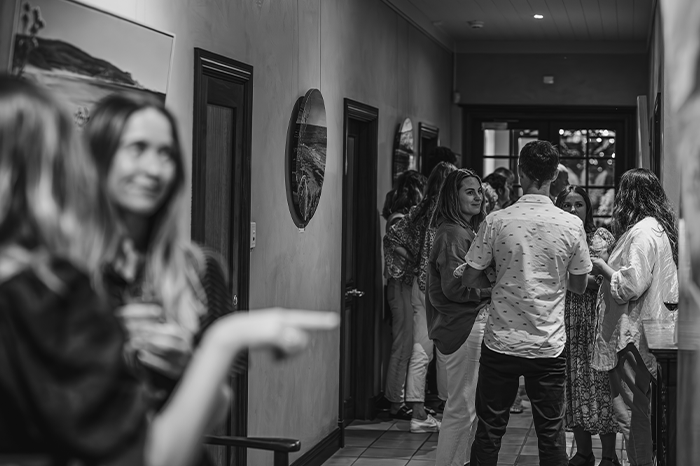
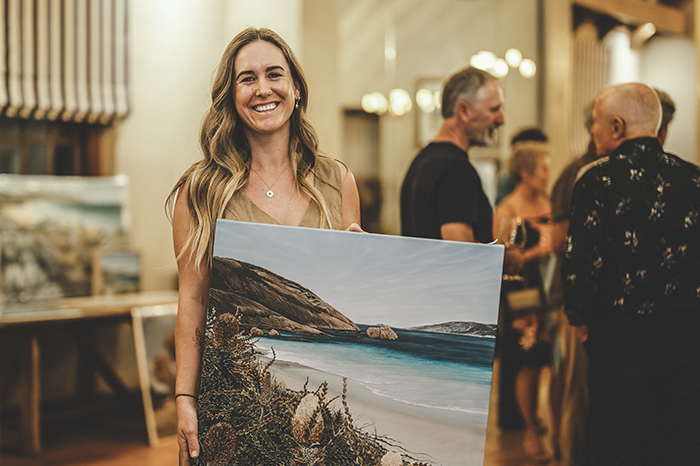
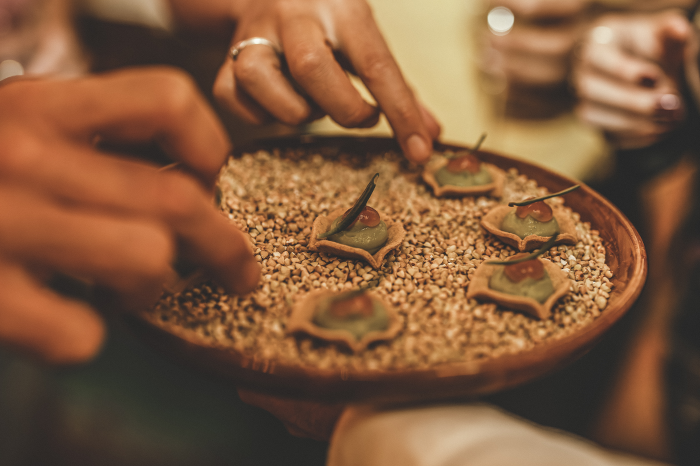
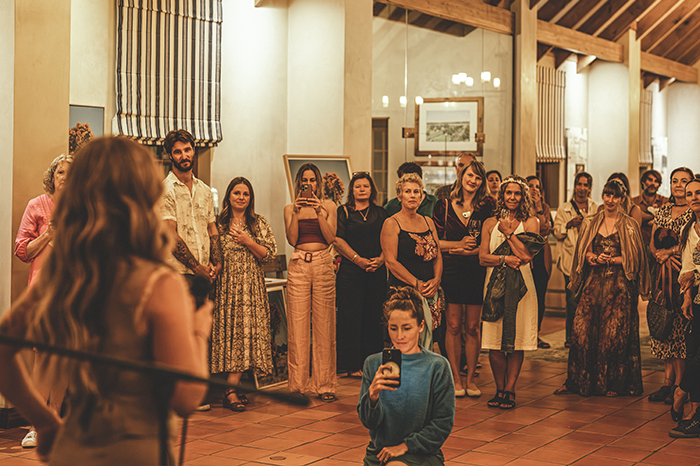

Images courtesy of Ovis Creative.
A CHAT WITH TAMIKA HOGAN
In the lead up to her exhibition 'Colours of Kambarang', launching at Voyager Estate on 30th March, we chatted with celebrated Margaret River painter, Tamika Hogan, about what inspires her to put brush to canvas.
Was there a particular person or moment that first inspired you to begin painting?
To be honest art has always been a lifeline for me, but there was definitely a pivotal point in my early teens. I was going through a hard time with my parents' divorce and that was when I started to delve deeper into my creative explorations. Creating became a sanctuary or a refuge for me during that time, where no matter what was going on around me, I could create worlds of colour and beauty. My dad seemed to understand that. One day I came home from school to find a beautiful new easel and a fresh set of paints and brushes he’d bought me as a surprise. That was when I started really trying my hand at painting and family and friends started to order a commission here and there in return for pocket money. It kept me grounded and planted the seed that one day I could make a living doing what I loved most.
Do you have any rituals or habits that aid your creative process?
Morning movement, always! I usually go for a beach walk and swim, which always sets me up for a motivated, inspired day ahead. But, my true inspiration comes from being out on country. Hiking into remote pockets of the coast, going on camping adventures as far away from the masses as possible. And surfing! Something about sitting out in the ocean in communion with the elements always gets the fire in my belly blazing.
What mediums do you prefer to work with, and what attracts you to them?
I work with oils and have done so since I was 16. Something about the idea of oil paints being the medium the masters used attracted me in the beginning. I came to love the thick consistency, the colour richness, and the fact that there is such a process to building layers. They always felt special and sacred to work with somehow.
Was there a particular artist or movement that influenced your style as a painter?
To be honest I always felt fascinated by the Dada movement. That always stood out as an interesting and pivotal era in art history. I wouldn’t really say that’s reflected in my art, so much as the way I think and view the world. My taste in art versus what I create are so infinitely different. What influenced my style and choice in subject matter the most is my immediate environment and the need I feel to recreate what I see.
What message or emotion do you hope viewers take away from experiencing your paintings?
I want people to be transported to a space that fills them with calm allure. I want them to feel the same awe and wonder that compelled me to recreate the experience in the first place. A huge part of my practice is getting out on country and immersing myself in the land, then communicating those experiences through painting. I like to think of my paintings like portals that can transport us to those far away places.
Could you give us a sneak peek into what guests can expect to see when you exhibit at Voyager Estate in April?
I’m really proud of this new collection. It’s some of my best work to date and I’m elated to be sharing it with the guests at Voyager Estate. It’s bold, it’s colourful, and it musters up all the feelings of joy that come with Kambarang season here in the South West.
For the last few years I have worked with a fairly subdued colour palette, so it’s been such a pleasure to work with unrestrained colour, and in many ways it feels very reflective of my own inner landscape and seasons. I’ve recently come out the other side of a really tough few years of my life. I feel like I’ve entered my own inner spring; a period of coming to life again. This collection really does feel like a celebration of new beginnings. I hope that the celebratory mood permeates through the canvas and leaves you feeling uplifted too!
Meet Tamika and delve into her artistic practice at our special evening exhibition on Friday, 5th April – book your tickets here.
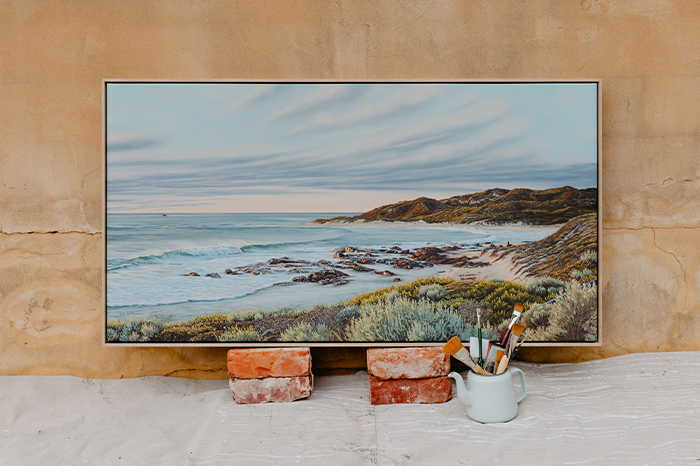


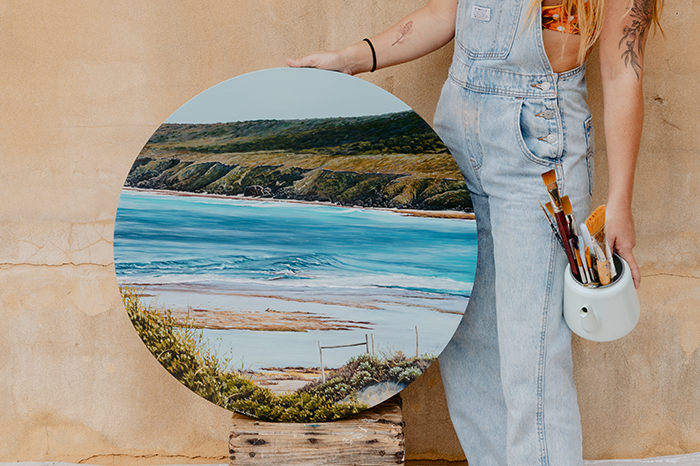
Images courtesy of Bianca Kate Photography.
CABERNET PICK
As we approached the final days of an early harvest, this past week has been all about Cabernet, with our Vintage Crew busy hand-picking certified organic fruit from our key Cabernet Sauvignon blocks, including our heritage V9 ‘Old Block’ and U12 ‘North Block.’
Pictured are some highlights from our V9 hand-pick, with the crew kicking off from dawn on a beautifully clear autumn morning. Planted in 1978, these mature vines are naturally low yielding and consistently produce fruit with great concentration and layers of complexity, underpinned by a silky, superfine tannin structure.
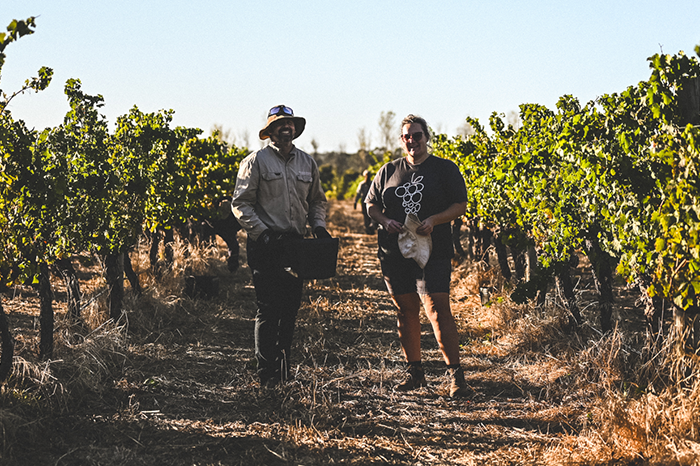
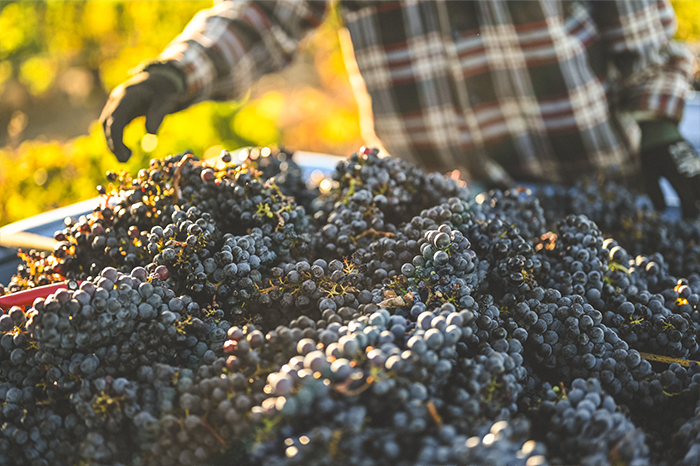
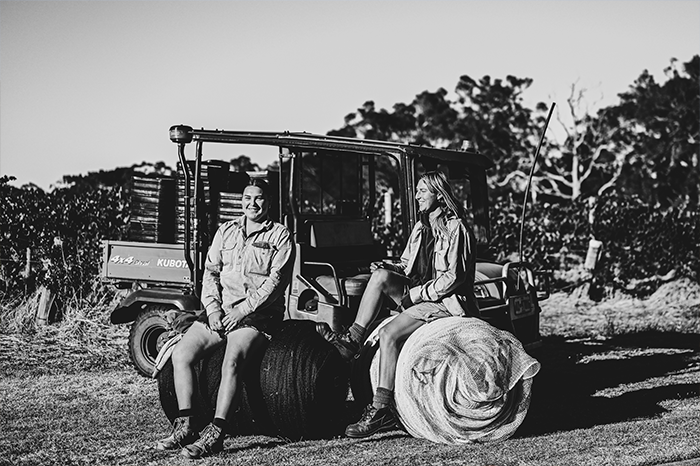
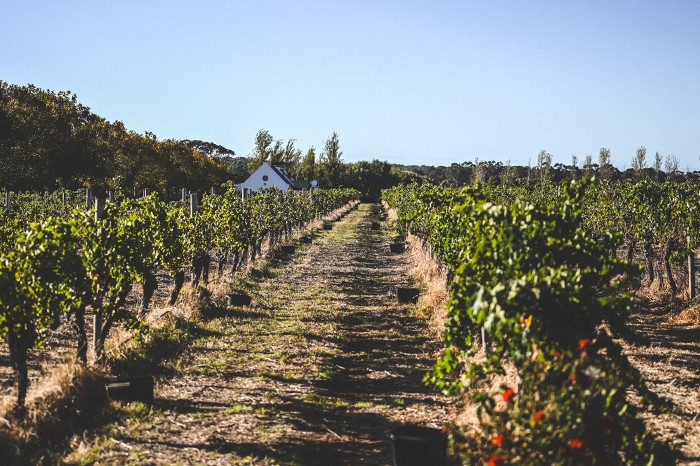
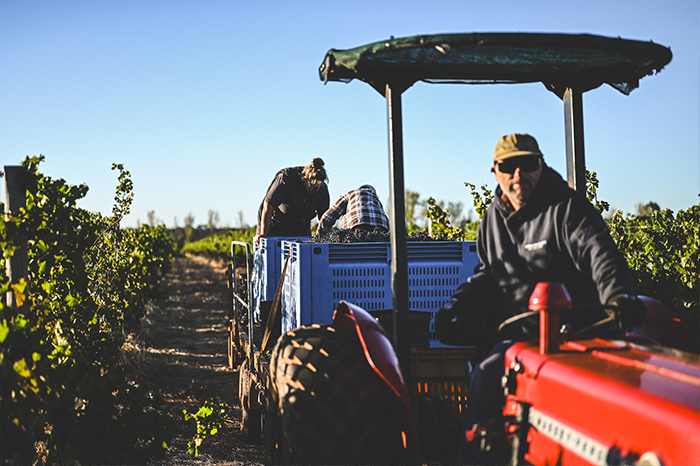
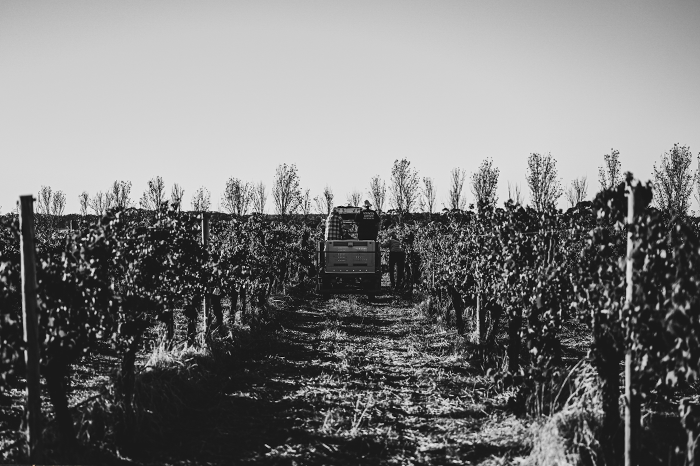
SYRAH HARVEST
The red harvest has officially kicked off, with some of our best Shiraz filling up the buckets under sunny skies.
Planted in 2008, the W4 vineyard is graced with low, well-balanced canopies producing consistent and pristine bunches. The 1995 plantings in U11 are lower yielding, but produce fruit with greater density, finer tannins and complex, ripe flavours.
With eagle eyes, nimble fingers and some motivational tunes to boot, the crew moved through the vines, carefully hand-picking and sorting each parcel of fruit, before sending it off to the press.
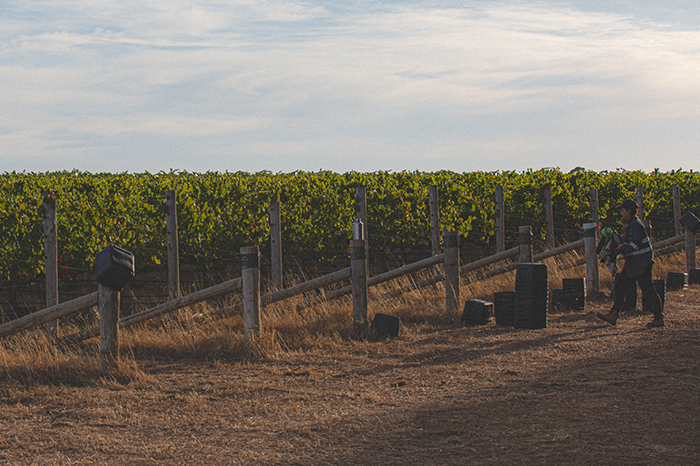
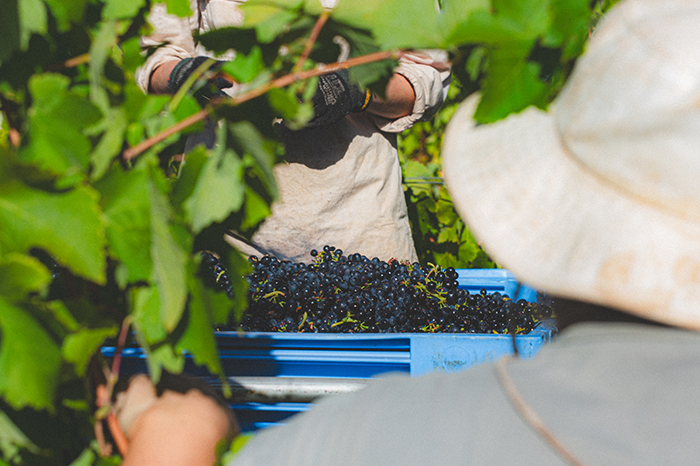
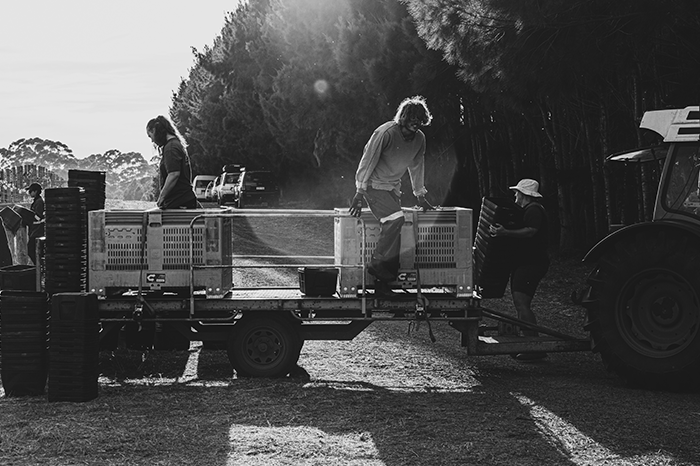
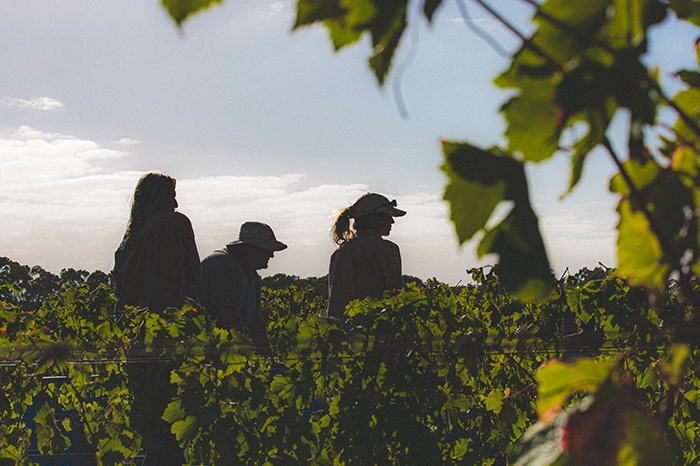
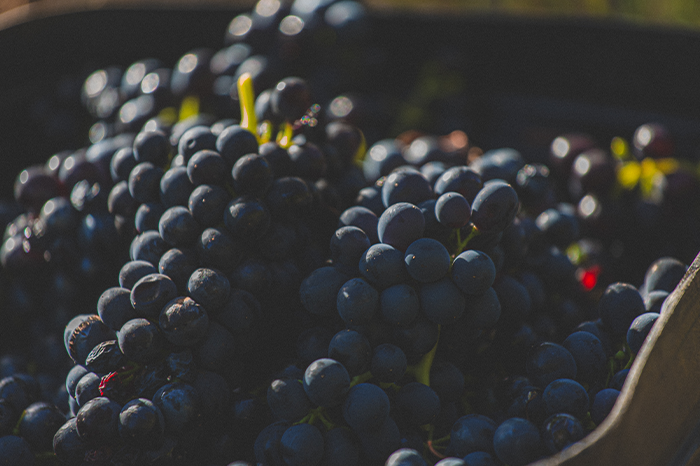
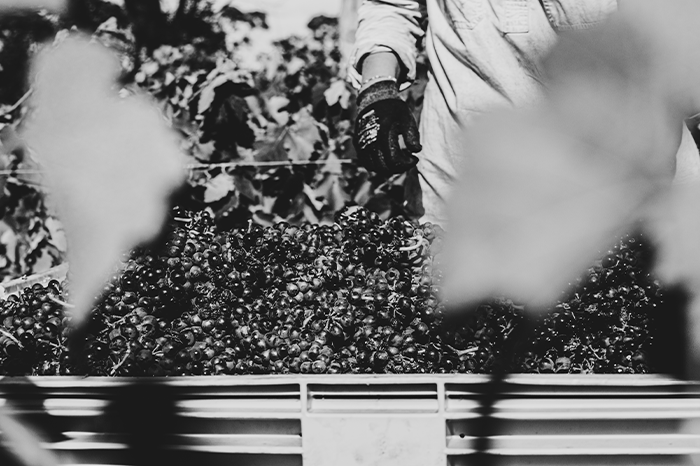
A WEEK OF WHITES
It's been a hive of activity in the vineyard and winery as our white harvest continued apace during week two of harvest.
There were plenty of early-morning starts as the first Chenin Blanc grapes came off the vines and into the winery, destined for our Sparkling Chenin Blanc, swiftly followed by our zesty Sauvignon Blanc and some golden Semillon (Chief Winemaker, Tim Shand's favourite juice to drink fresh off the press!).
Vineyard Manager, Glen Ryan, was also keeping a close eye on our legacy block V9, to ensure the fruit bound for our MJW Cabernet Sauvignon is of exceptional quality again this year. A quick bit of leaf thinning and selective bunch trimming had the vines humming along nicely, in preparation for picking in a few weeks.
FROM THE GARDEN
We have officially welcomed a new season in our organic Kitchen Garden and with it, brand-new produce to feature on our BACCA menu.
The team have been on a mission to get their ducks in a row, focusing on low-maintenance produce that is slightly easier to grow, supported by a bit of rejuvenation and a goal to keep most of the bugs at bay. There was a moment where things were ticking along nicely, until they were greeted with heat waves and water woes, which have kept them very busy!
Snakes have come to visit, which is a little terrifying, though it's nice to know that they’re keeping guard, helping to scare away our small furry friends that like to eat the crops. Wasps have also been spotted flying about looking for a caterpillar snack. It has been incredible to witness organics in action, as they hide among the cabbages and carry off those pesky green bugs.
Planting started in December last year, a little later than usual, while the winter crops were drawing to a late close. Whilst the Belted Galloway cows (or 'belties' as they are affectionately known) enjoyed the remains of the brassicas, the team pondered what they would grow next.
An early heat wave delayed the decision-making and caused a reduction in soil moisture, however, this also meant that the purslane had a minute to grow! Purslane is a common 'weed' that produces an edible leafy, green vegetable. The team had differing opinions on what to do with it. It makes a great cover crop if you leave it in the ground, but it is also nutrient-dense, high in omega-3 and a great garnish, so definitely worth harvesting for dishes. Ultimately they opted to do both, and lucky too, as the purslane left in the ground proved helpful in the heatwaves, holding moisture in the soil. Not to mention, the belties like to have a little snack on it.
Along with the purslane, the team have planted all the usual summer suspects; cucumbers, pumpkins, rockmelons, zucchinis, corn and eggplants. A few different cucumber varieties have brought some different menu creations in the form of pickles and juices. A new dish of sardine, ajoblanco and cucumber has just landed on the menu paired with the 2023 Sauvignon Blanc Semillon. What a match!
The zucchinis come in different sizes, making them especially good at hiding from the team on harvest days. Head Chef, Travis Crane, thinly slices them, rolls them with goat’s curd and serves them next to Arkady Lamb. Red cabbages are also going strong and are currently featured as the vegetarian version of our chicken course...you may see them on something new soon. Ivory eggplants are also cropping well and featured heavily on our vegetarian menu.
The Slim Jim eggplants are just starting to fruit and will go on the menu later this year alongside succulent local duck. Pumpkins and rockmelons are coming in thick and strong. It's looking like a potential 30 kg haul per week for the next little while but we're not counting our chickens (or our ducks!).
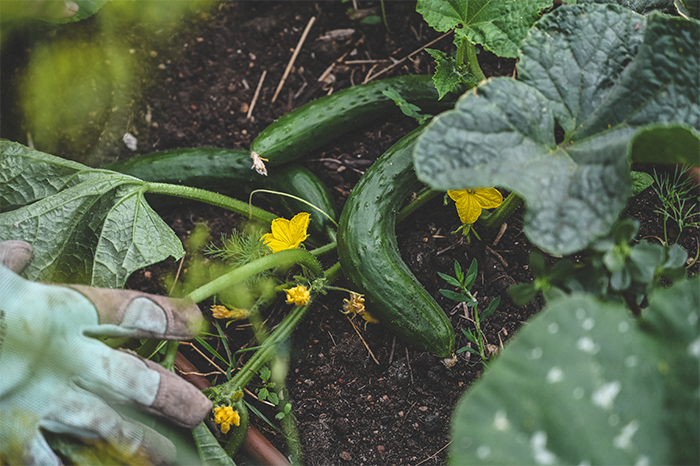
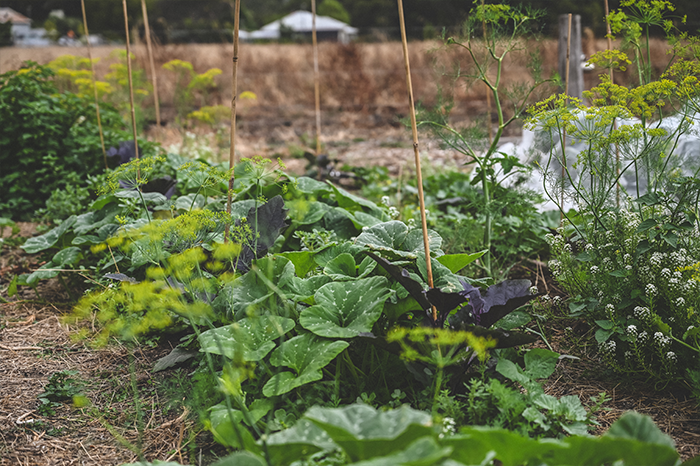
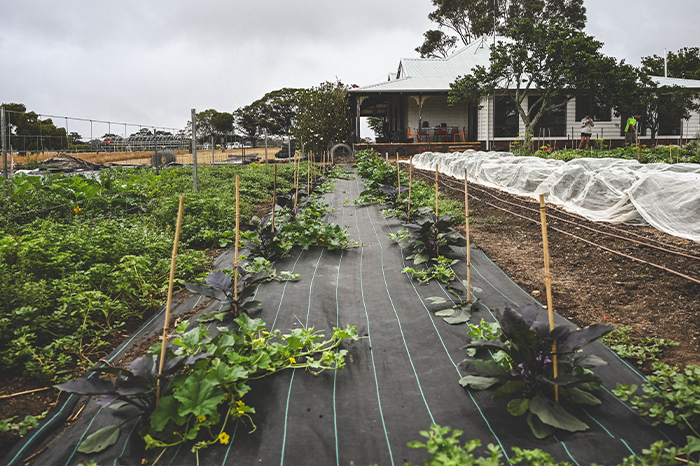
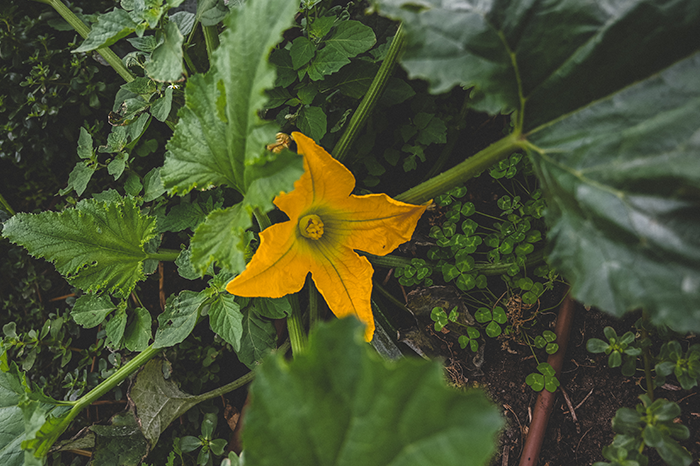
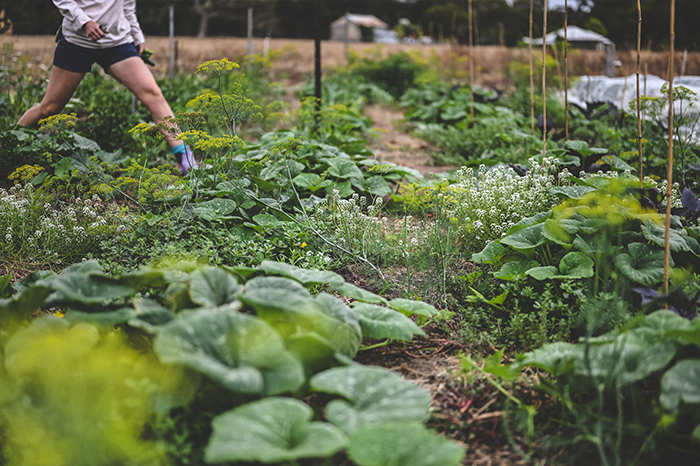
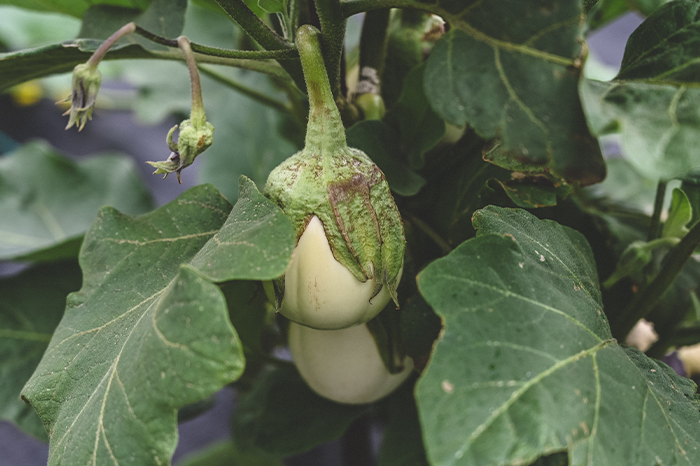
CHARDONNAY HARVEST
It was all smiles this week as the team wrapped up another successful Chardonnay harvest under moody Margaret River skies.
Vintage ‘24 kicked off early and dry, with each day becoming a race to get the fruit in the bag before the summer heat set in. Fortunately, the team enjoyed some cooler mornings and nights towards the end of the pick, providing a welcome reprieve amidst the busyness of an action-packed week.
Judicious hand-picking and sorting in the winery have resulted in a slightly lower yield of Chardonnay fruit compared to last year, but the quality is looking exceptional. Stay tuned as Chenin Blanc and Sauvignon Blanc start to come off the vine very soon.
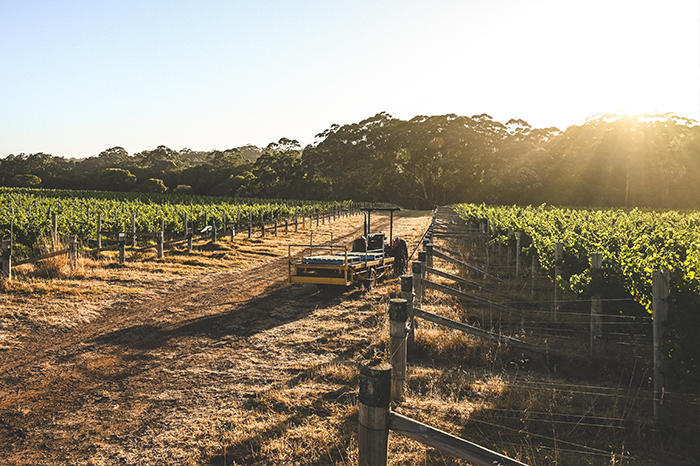
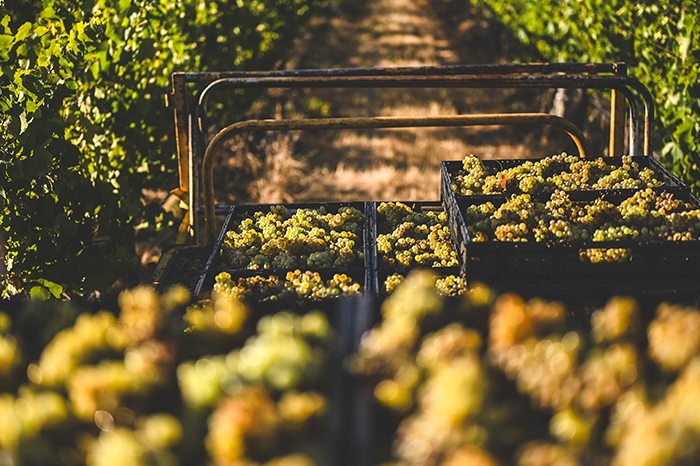
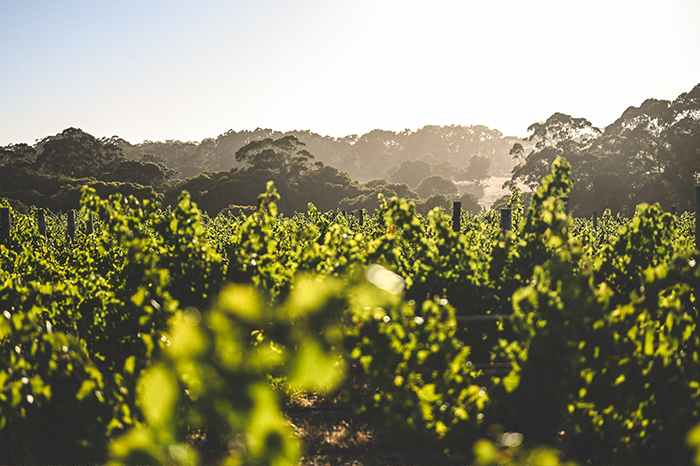
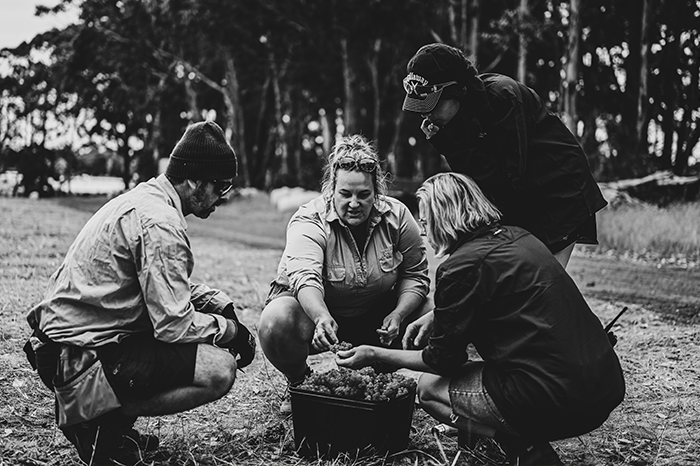
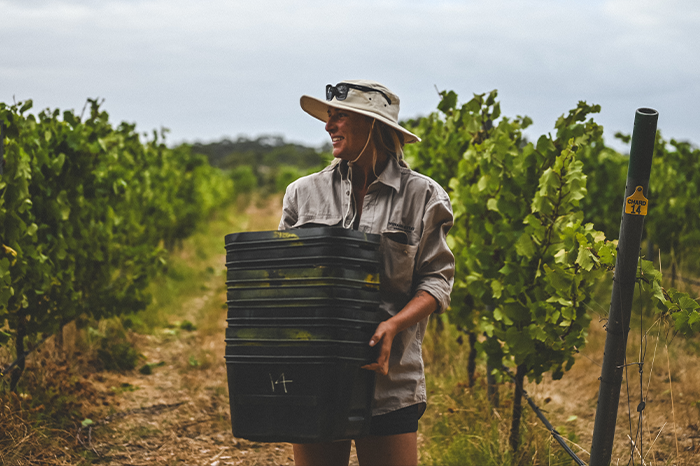
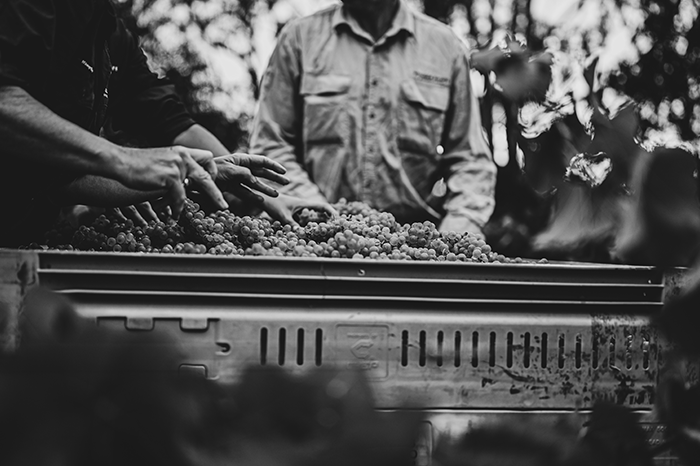
VINTAGE '24 BEGINS
A few highlights from our first hand-pick of Vintage '24, as our Crew got down to business in our certified organic Broadvale Block 11 Chardonnay vineyard late last week.
The slightly overcast skies couldn't dull the excitement in the air as the first ripe bunches hit the buckets and the team settled into the rhythm of a fresh harvest season.
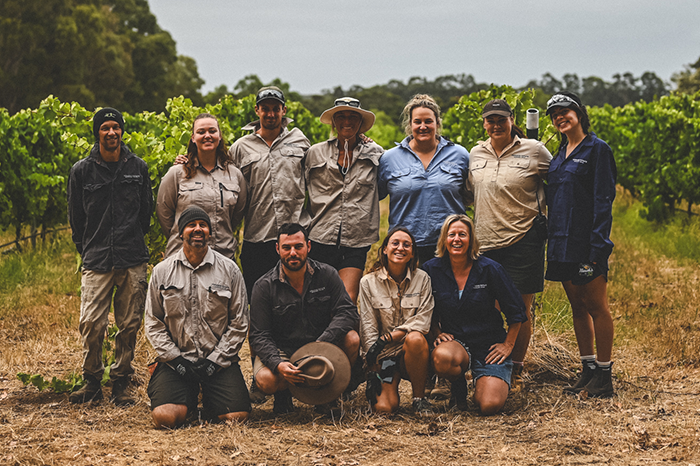
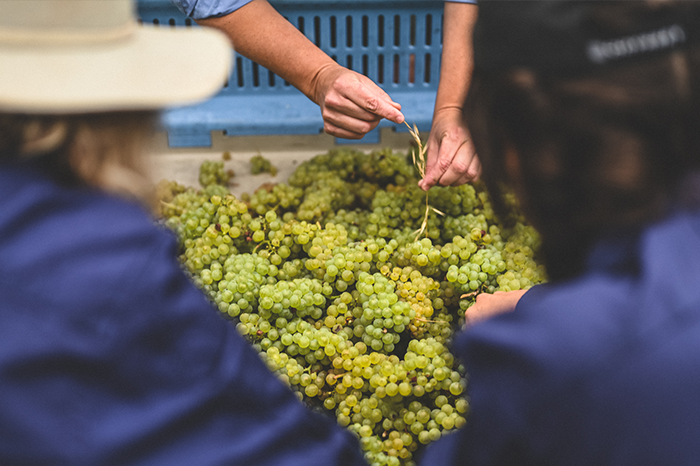
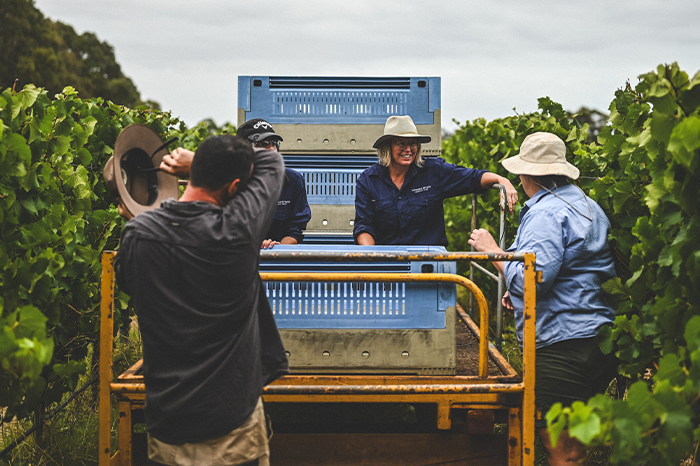
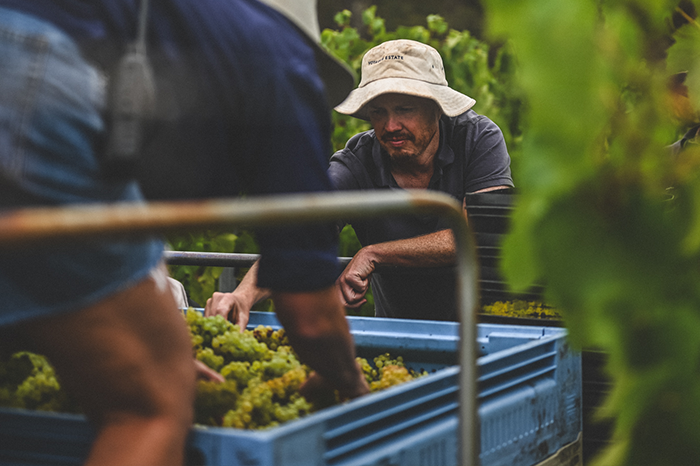
SUCKLING TOP 100
We're thrilled to share that our 2021 MJW Chardonnay has been named in the Top 100 Wines of Australia for 2023 by JamesSuckling.com.
Senior Editor, Ned Goodwin MW, says this year's shortlist is "A reflection of the Aussie zeitgeist...drinkers and winemakers alike seek a coda of freshness, drinkability, and a sense of place. However, they also appreciate wines grown with respect: wines that incorporate an ethical approach to the land, the water that sustains it and a long gaze into a brighter future, as much as wines that make us want to reach for a third glass before the bottle is empty."
For the 2021 MJW Chardonnay specifically, he awarded an impressive 95 points, commenting "This is a classy Margaret River Chardonnay – mid-weighted, taut, and immaculately detailed, with density, intensity, and subtle power parrying impressive length."
Explore the full Top 100 here.
GARDEN TO TABLE
This year marks our first foray into growing our own organic produce for the Voyager Estate Restaurant, and we’re pleased to report that the new Kitchen Garden is thriving under the watchful eye of Head Chef Travis Crane.
A lot of hard work and dedication has gone into cultivating our patch, located on an adjacent property to the Estate, alongside the Landsmith Home Farm. Preparation involved clearing rows, lots of whipper snipping, and a fair few waves to the resident cows in the process.
It's a labour of love, but an essential step on our pathway to becoming a carbon neutral business. There are many benefits to becoming more self-sufficient, chief among them the reduction of food waste and the lowering of food miles. Our produce is managed organically, meaning no nasties used in our farming practices – just beautiful, fresh vegetables to inspire our seasonal menus.
The team were fortunate to find potatoes and Jerusalem artichokes already growing in the space – a very satisfying first harvest that included a lot of dirt under fingernails! These ingredients inspired Chef Travis’s now infamous potato dish, as well as a unique, and utterly delicious, Jerusalem artichoke pudding.
Some of the first produce to go into the ground were the brassicas. Unfortunately, the team didn’t realise that the rabbits were looking on with hungry eyes and greedy tummies; they made short work of that first planting. There were a few ‘Farmer McGregor’ moments as they recalibrated and put some protections in place to keep out our furry friends.
Our kailaan has taken to the patch beautifully. It’s the gift that keeps on giving, recently astounding the team with a 7kg harvest! Purple broccoli, purple cauliflower and romanesco have also gone in and are thriving. Earlier this month, the fennel started coming off, and our garlic is producing beautiful scapes (thin green stalks that grow from the garlic bulb).
The real star of the show, however, has been the cabbages. We’ve had a range of shapes and sizes, with mini-sized ones cooked over fire, and beautiful baby cabbage-ettes served alongside our venison. The sugarloaf variety has exploded, with 50kg of cabbages coming off the patch and counting!
Next season the team are hoping for a bountiful harvest of eggplant, cucumbers, melons, pumpkins, corn, onions, beets and carrots. Stay tuned for how these ingredients will feature on our menu throughout the year.
